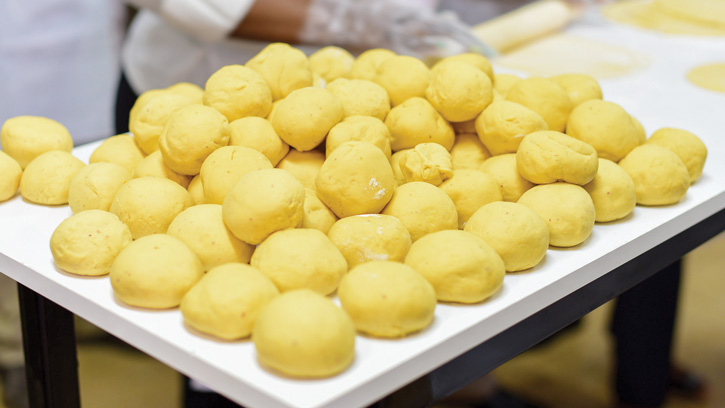A Sweet Potato Success Story
Food Security | INNOVATIONS
The role food science can play in reducing food insecurity has often gone unrecognized. Fortunately, this is changing as the emerging area of food science for relief and development (FSRD) gains traction.
One innovative and high impact use of FSRD is a project led by the International Potato Center (CIP) in Kenya to reduce vitamin A deficiency in Sub-Saharan Africa. CIP used principles of food science to successfully incorporate biofortified sweet potato into popular ready-to-eat foods that are boosting vitamin A intake in Kenya, Rwanda, Malawi, and other African countries.
Breeding to create a biofortified orange-fleshed sweet potato rich in vitamin A was an important agricultural achievement in Sub-Saharan Africa, where an estimated 48% of children under age five suffer from vitamin A deficiency, which can lead to blindness and increased risk of death from infection (Stevens et al. 2015). But consumers preferred the drier, starchier texture of the more commonly used white-fleshed sweet potato, which meant the orange potato wasn’t widely accepted.
In response, CIP launched a program called Sweetpotato Action for Security and Health in Africa. One component of the program, led by Tawanda Muzhingi of CIP and Antonio Magnaghi of Euro Ingredients in Kenya, involved finding ways to include biofortified orange sweet potato in popular ready-to-eat foods like bread.
The research team first experimented with making different types of ingredients from the biofortified orange-fleshed sweet potato, such as puree and flour. The puree format showed the highest potential for success thanks to lower production costs and the ability to include higher levels of the ingredient in products without a negative impact on taste and texture. The team then developed a simple, economical processing method for a puree with a four-month shelf life that would be feasible for food processors in Sub-Saharan Africa to produce.
With some farmers already growing biofortified sweet potato and an ingredient processing method established, CIP set out to develop the supply chain by reaching out to local bakeries. When training was provided and the nutritional benefits explained, bakery operators responded positively. CIP went on to facilitate collaborations among farmer cooperatives to grow the crop, small-scale processors to produce the puree, and bakeries and supermarket chains to make and sell the sweet potato bread.
Introducing a tasty, nutrient-rich food made with a locally grown and processed crop has led to higher vitamin A consumption in several sub-Saharan African countries. Sweet potato bread has become so popular in Kenya, for example, that the Tuskys supermarket chain reported selling more than 3,000 loaves a day in its 20 stores (Bocher et al. 2017). Consumers prefer the softer texture of sweet potato bread and associate its color with premium quality. The project has also increased income for many African farmers, processors, and retailers.
The central role of food science in these successes underscores the great potential of FSRD to improve food security. As the use of biofortified sweet potato as an ingredient expands into new countries, as well as new products, the impacts will be greater still.


